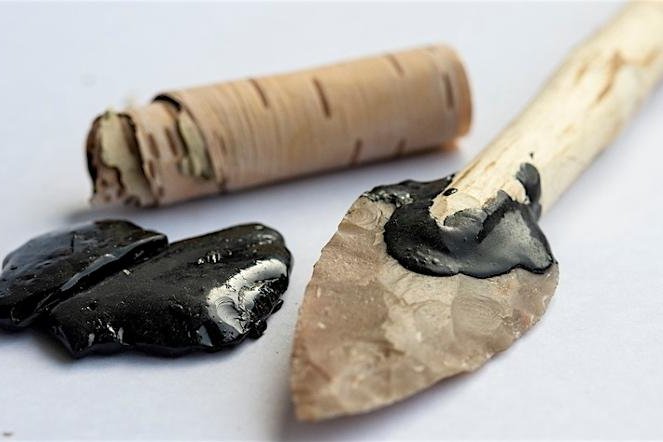Scientists replicated the ancient tar extraction methods to imagine how Neanderthals might have used the adhesive for tool making. Photo by Paul Kozowyk
Oct. 23 (UPI) -- Neanderthals were using sophisticated methods to extract birch tar and use it as an adhesive in tool making.
Scientists recently found traces of the ancient glue on the handle of a 50,000 year-old flint tool, according to a study published this week.
"What is so interesting about this find is the combination of a large amount of birch tar on a small and simple sliver of stone," Paul Kozowyk, a doctoral candidate at Leiden University, said in a news release. "It shows that Neanderthals were not only skilled in making tar, but that they also invested in materials that are all too easy to overlook in archaeological research."
Researchers are lucky to have found anything at all. The flint tool was one of several Stone Age artifacts recovered from Sand Motor, an artificial sandbank on the west coast of the Netherlands. Scientists suspect the artifacts were dredged by ships and deposited on the beach thousands of years after being washed into the North Sea.
Evidence of ancient birch tar extraction has previously been documented at Königsaue in Germany and Campitello in Italy. Now, researchers have discovered evidence suggesting Neanderthals in northwest Europe were using complex techniques to build tools.
"This find shows that Neanderthals placed a lot of emphasis on 'high-tech' methods, even on the periphery of their inhabited territory," said Leiden researcher Gerrit Dusseldorp. "When the North Sea dried up during the last Ice Age, they turned to the knowledge economy to survive the barren environment."
Analysis suggests the tar was applied to the tool's handle to make it easier to grip, but researchers expect the ancient glue was also used to affix stone blades to wooden handles.
Scientists previously hypothesized that larger group sizes, enhanced communication and cultural exchange were all necessary for tool making innovations, but Neanderthals were organized into small bands.
Authors of the new study -- published this week in the journal PNAS -- suggest Neanderthals were compelled to innovate in order to guard against food shortages, cold spells and the many other realities of life during the Stone Age.
"Together with data from experiments and other Middle Paleolithic adhesives, it demonstrates that Neandertals mastered complex adhesive production strategies and composite tool use at the northern edge of their range," researchers wrote.















